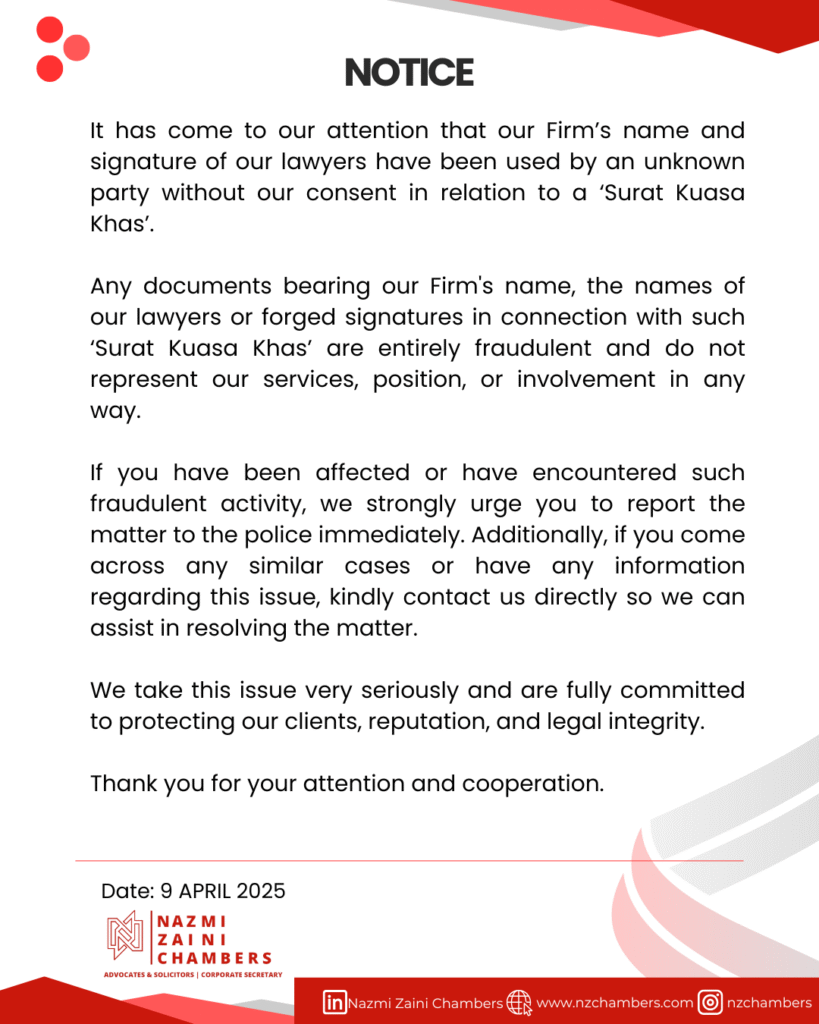Constructive Dismissal in Malaysia: Pointers for Employers & Employees
In the intricate landscape of employment law, few concepts are as nuanced and potentially contentious as constructive dismissal. Constructive dismissal in Malaysia refers to a situation where an employee resigns from their job due to fundamental breaches of their employment contract by the employer. While the employee technically resigns voluntarily, the resignation is treated as a termination by the employer because the working conditions have become so intolerable or fundamentally changed that the employee has no reasonable choice but to leave.
The Supreme Court in Wong Chee Hong v. Cathay Organisation (M) San Bid[1], adopted the English court definition of constructive dismissal, where the Court held that:
“It would be a dismissal if an employer is guilty of a breach which goes to the root of the contract or if he has evinced an intention no longer to be bound by it. In such situations, the employee is entitled to regard the contract as terminated and himself as being dismissed.”
What May Be Deemed As Constructive Dismissal in Malaysia?
Instances in which an aggrieved-employee may identify when an employer’s conduct results in constructive dismissal include the:[2]
(a) arbitrary reduction of wages, commission, allowance, etc;
(b) withdrawal of contractual benefits provided as they are mentioned in the contract of service;
(c) altering or taking away facilities reflective of the position;
(d) demotion or downgrading to a lower post, with or without the reduction of salary, fringe benefits, etc;
(e) transfer to a different location if such transferability is not clearly stated in the letter of appointment;
(f) substantial changes in the job function, especially if the employee is incapable of performing those functions;
(g) behaviour by the employer, which is intended to humiliate the employee;
(h) acts of victimisation such as setting unattainable deadlines, constant fault-finding and harassment (including sexual harassment); and
(i) threatening with dismissal if the employee does not resign from the job.
However, the categories of conduct amounting to constructive dismissal is not exhaustive as made clear in the Court of Appeal in Ang Beng Teik v. Pan Global Textile Bhd, Penang[3]:
“There is no magic in the expression ‘constructive dismissal’. It is only a convenient label to describe the kind of conduct of an employer towards an employee which, though short of a formal dismissal or termination, the latter may treat as amounting to a dismissal without just cause or excuse. The categories of such conduct are not closed. Whether the conduct complained of is, in truth, a dismissal cloaked as something else, is a question of fact. But the facts must disclose that the particular workman has considered himself as dismissed by the particular act of the employer.”
If the aggrieved-employee believes they were unfairly dismissed by their employer, a representation and/or complaint can be made to the Director General of Insolvency.
A. Representation to Director General of Industrial Relations
What Are The Procedures?
i. The aggrieved-employee must submit a Form P1 at the nearest office of Director General of Malaysia Industrial Relations within 60 days of being dismissed.[4]
ii. Together with Form P1, the aggrieved-employee must submit a copy of identification card / passport and any other relevant documents such as Contract of Employment and Termination Letter.[5]
iii. Upon receiving the aggrieved-employee’s representation, the Industrial Relations Department will call both the aggrieved-employee and employer to arrange for a conciliation meeting, i.e., a meeting for each party to express their grievances, and explore possible way to resolve the matter.
iv. During the conciliation meeting, neither the employer nor the employee can be represented by an advocate and solicitor.
v. The aggrieved-employee can be represented by himself, officer of a trade union, or an official of organisation of workmen registered in Malaysia.
vi. The employer can be represented by himself or through an authorised employee, officer of a trade union, or an official in an organisation of employers registered in Malaysia.
If attempts to resolve the matter is unsuccessful during the conciliation meeting, the Director General of Industrial Relations Department shall refer the representation to the Industrial Court.[6]
B. Referral To The Industrial Court
Burden of Proof
The aggrieved-employee bears the burden to prove that he was indeed constructively dismissed by the employee .[7]
In determining a claim for constructive dismissal, the Court utilises a test referred to as “The Contract Test” established in the locus classicus case of in Wong Chee Hong (supra) which among others, held that:
“…it would be a dismissal if an employer is guilty of a breach which goes to the root of the contract or if he has evinced an intention no longer to be bound by it. In such situations, the employee is entitled to regard the contract as terminated and himself as being dismissed.”
The principles above originated from the English case of Western Excavating (ECC) Co Ltd v. Sharp,[8] which held that it is essential to check the employment contract to determine if the employer’s actions amount to a significant breach of contract. The reliance on the “Contract Test” was recently reconfirmed in the 2024 Federal Court decision in Tan Lay Peng v RHB Bank & Anor: [9] where briefly, the Federal Court stated as follows:-
“[30]….the reasonableness of the employer’s conduct is not the legal test for constructive dismissal. However, it can be a factor to be taken into consideration in determining whether there is any fundamental breach of the contract of employment by the employer. Further, the reasonableness of the employer’s conduct per se is insufficient in establishing constructive dismissal. Its assessment must relate to the contract of employment and its fundamental or repudiatory breach.”
The Conditions in Asserting a Claim for Constructive Dismissal
The Court of Appeal in in Ng Teck Fay v. Mahkamah Perusahaan Malaysia & Anor[10] affirmed the four conditions that must be fulfilled for the an aggrieved-employee to effectively assert a claim of constructive dismissal against the employer. The conditions are as follows:-
i. there must be a breach of contract by the employer;
ii. that breach must be sufficiently important to justify the employee resigning;
iii. the employee must leave in response to the breach and not for some other unconnected reason; and
iv. the employee must not occasion any undue delay in terminating the contract, otherwise he will be deemed to have waived the breach and agreed to vary the contract.
The Available Remedies
Due to the personal nature of employment, reinstatement may not frequently be the suitable remedy. Alternatively, the Court may grant an amount of compensation as an alternative to reinstatement.
Authors:
1. Brandon Cheah
2. Airen Natasha
Published Date: 1 May 2024
References:
[1] [1988] 1 MLJ 92.
[2] D’Cruz M.N. (2007). A handbook of Malaysian Labour Laws. Kuala Lumpur: Leeds Publications.
[3] [1996] 4 CLJ 313.
[4] Section 20(1A), Industrial Relations Act 1967.
[5] Section 20(1), Industrial Relations Act 1967.
[6] Section 20(3), Industrial Relations Act 1967.
[7] Chua Yeow Cher v. Tele Dynamics Sdn Bhd [2000] 1 MLJ 168.
[8] [1978] ICR 221 (CA).
[9] [2024] MLJU 840.
[10] [2021] 10 CLJ 73.







